Screensavers are moving visuals that appear on your system’s screen after the system has been idle for a while. However, at times, the screensaver may not start or may stop working for various reasons. In case the screensaver is not working in your Windows system, then this article may help you.
Screensaver not working in Windows 11/10
Earlier, screensavers were necessary for CRT monitors since the monitor background could get discolored if the screen wasn’t changed for long. This isn’t the case with modern monitors, but screensavers are necessary to hide information. In many computers, screensavers aren’t activated by default. In other cases, Windows Updates can turn off the screensavers and you need to change the settings.
In case you encounter the issue of screensaver not working in Windows 11/10, try updating Windows. If this doesn’t help, proceed with the following solutions sequentially:
- Check the Screensaver settings
- Check Sleep settings
- Keep your mouse clean and away from polished surfaces
- Unplug the peripherals
- Restore the default Power settings
- Use the Power Troubleshooter
- Update Display or Graphics Drivers
- Run an SFC scan.
Let us see them in detail.
1] Check the Screensaver settings
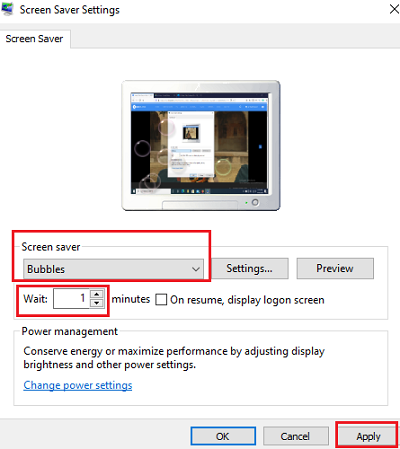
It is quite possible that the screensaver is turned OFF. This could either be a default setting or could have changed after a Windows update. Some third-party programs are also known to alter these settings. The screensaver settings could be checked as follows:
Search for ‘screen saver’ in the Windows search bar and select the option for Change screen saver. This will open the Screen Saver Settings page.
If the Screen saver is set at <none>, the screen saver is disabled. In this case, you can change it to any other option of your choice in the drop-down menu.
Select the Wait time of your choice.
Hit Apply and then OK to save the settings.
2] Check Sleep settings
If your Sleep settings are set to turn off the screen or Sleep before the screensaver can activate, then you will never see it. So set your Screensaver to activate, say after 5 minutes, and PC to Sleep (Turn off the display time setting) after, say 10 minutes.
Read: Windows computer stuck or frozen on Screensaver.
3] Keep your mouse clean and away from polished surfaces
The slightest movement of a mouse counts as a movement for the system. If an optical mouse is unclean or kept on a polished surface, it will keep recording movements and thus the screensaver might not appear. To isolate this probability, clean the bottom of the mouse and keep it on white paper for a while. If the screensaver still doesn’t appear, move to the next solution.
4] Unplug the peripherals
When connected to the system, some peripherals send a message that the computer needn’t rest since the peripheral device is at work. In many cases, this instruction is encoded into the drivers.
In this situation, you can try unplugging all the peripherals and check if the screensaver appears. If yes, plug the devices back one by one to figure which one caused the bug. Now it is for you to decide whether or not to keep the peripheral.
5] Restore the default Power settings
The screensaver is governed by the power settings of the system. If a Windows update or third-party software messes up with the Power settings, the screensaver might not work right. In this case, you can reset the Power settings to default as follows:
Press Win+R to open the Run window and type the command powercfg.cpl. Hit Enter to open the Power Options window.
Click on Change plan settings corresponding to your current power plan.
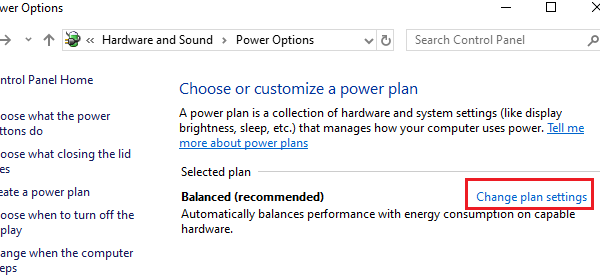
Select Restore default settings for this plan and hit Yes.
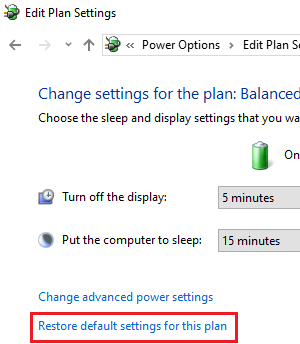
This will restore the power settings to default. Check if it helps with the screensaver.
6] Use the Power Troubleshooter
The Power Troubleshooter can fix issues related to the Power settings. The procedure to run the Power troubleshooter is as follows:
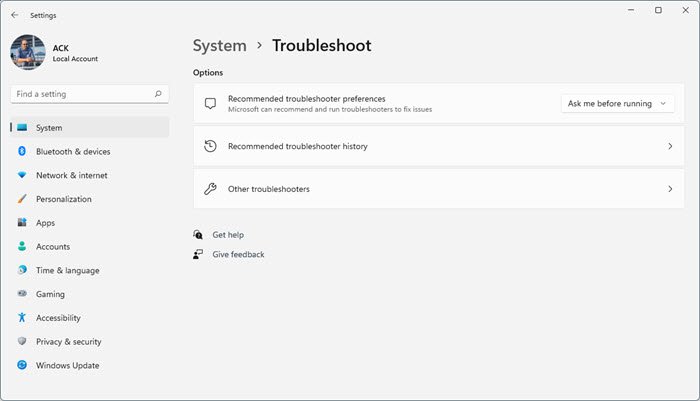
In Windows 11: Open Settings > System > Troubleshoot.
In Windows 10: Go to Settings > Updates and Security > Troubleshoot.
Select the Power troubleshooter from the list and run it.
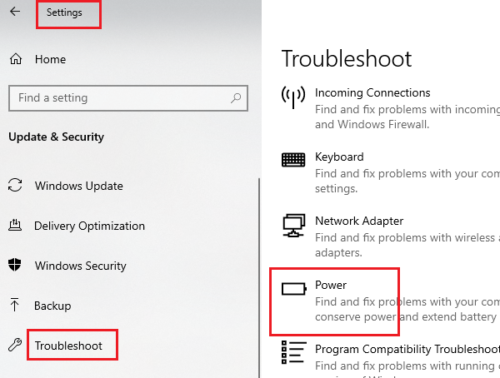
Restart the system and check if it resolves your problem with the screensaver.
7] Update Display or Graphics Drivers
Update your Graphics Drivers and see if it helps. If you recently updated them, then rollback and see. Else you can download the drivers and fresh-install them.
8] Run an SFC scan
Missing or corrupted system files can cause the issue in discussion. The SFC scan help in checking for missing files on the system and replacing them if necessary.
See this post if your Screen saver settings are greyed out.
What is preventing my screensaver from running?
A screensaver might not run due to interference from external devices like wireless mice or keyboards. Corrupt system files or malware infections could also disrupt the screensaver’s functionality. To resolve this, disconnect unnecessary devices and perform a system scan to check for any issues affecting your screensaver’s operation.
How do I get my screen saver to work?
To activate your screen saver, right-click the desktop and choose “Personalize.” Select “Lock Screen” from the left-hand menu and click “Screen saver settings.” Choose your desired screen saver and set the timing. This allows your screen saver to work efficiently on your schedule.
Leave a Reply